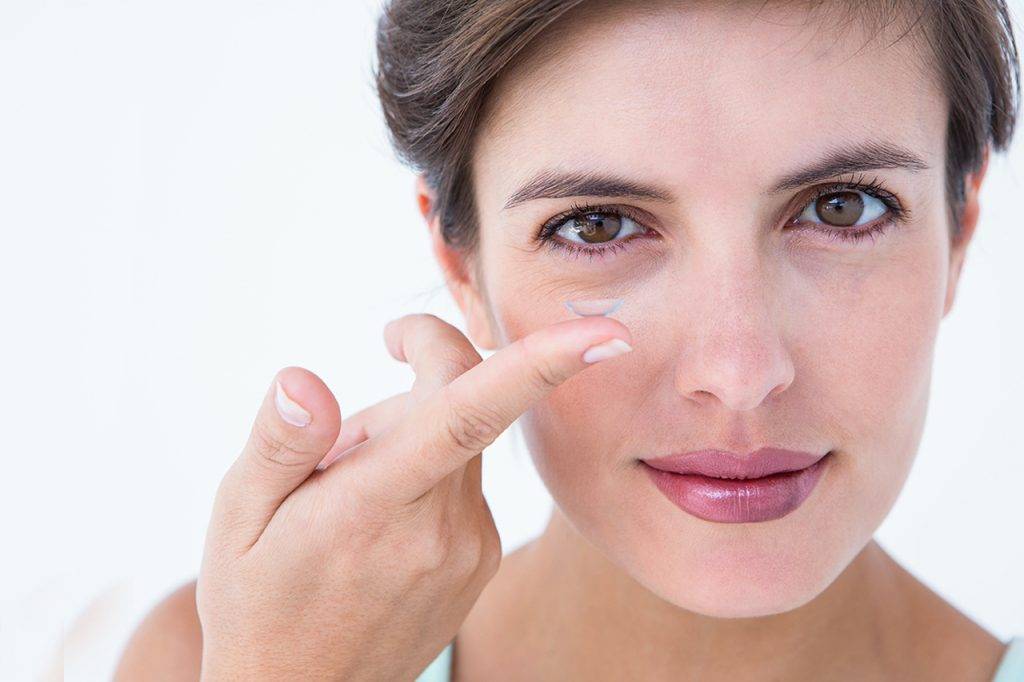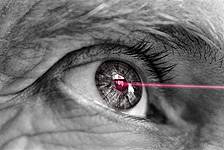Approximately 90 percent of contact lens wearers prefer soft contact lenses.
There are many different options when it comes to soft contact lenses. While your optometrist can help you to narrow down your choices – usually dependent on your prescription and personal lifestyle – it is important to be aware of the different types of soft contacts.
This guide is meant to help you gain a better understanding of soft contact lenses — and to help you become familiar with the different terms your optometrist may use when speaking to you about soft contact lenses.
Standard hydrogel or silicone hydrogel contact lenses?
Standard hydrogel and silicone hydrogel are the two primary materials used to manufacture soft contact lenses. Both materials create a soft, flexible, absorbent plastic that remains soft when hydrated with solution or water, and hardens as it dries.
Both types of materials work in a similar way, and help to correct a variety of refractive errors. However, while standard hydrogel lenses are a popular choice due to their nature and affordability, silicone hydrogel lenses contain a higher oxygen permeability.
Silicone hydrogel soft lenses allow more oxygen to penetrate through the lens and reach the cornea, or the outer surface of the eye, and are therefore more commonly prescribed by optometrists than standard hydrogel lenses.
As a result, these soft contact lenses are known for their ability to maintain hydration and comfort throughout the day, and can be worn for longer periods of time.
This type of lens may be beneficial if you suffer from dry eye or spend many hours in front of a computer screen.
Daily contact lenses
Daily lenses, also called ‘daily disposables’, are worn for just one day, and then discarded before bedtime each night.
These convenient lenses may be beneficial if you suffer from allergies, or simply want to avoid the hassle of cleaning, disinfecting, and storing your lenses.
These lenses are designed with a high water content and are thinner than other lenses— making them both comfortable and easy to adapt to.
Bi-weekly contact lenses
Bi-weekly lenses, also known as ‘two-week disposable lenses’, can be reused for two weeks, then after two weeks they must be replaced with a fresh pair.
These lenses cannot be worn while sleeping and must be removed every night to be disinfected and stored in their storage case.
These lenses are both comfortable (made of silicone hydrogel) and affordably priced. They are the perfect blend between daily disposables and monthly lenses, making them a popular choice.
If you want to know more about the benefits of soft contact lenses, contact an eye doctor near you, who can discuss these with you.
SEE RELATED: How to Insert and Remove Soft Contact Lenses
Monthly contact lenses
Monthly lenses offer the advantage of only replacing your lenses 12 times a year, as the same lenses are worn for the full month before being replaced.
These lenses are the most affordable of all the types of disposable lenses, but are usually thicker as they are designed to be more durable than other lenses.
Cleaning and disinfecting these lenses properly is crucial in order to prevent protein buildup, infections, and other complications.
Extended wear contact lenses
Extended wear lenses are designed to be worn continuously, even while you sleep, for up to seven days — some brands can even be worn for up to 30 days.
Extended wear contacts may be beneficial if you lead an active or unpredictable lifestyle which doesn’t allow you to take the time to remove and clean your lenses properly.
Moreover, if you have amblyopia (lazy eye) or a particularly high refractive error, these lenses will provide continuous correction throughout the day and night.
The downside to these lenses is that they increase the risk of infection and corneal neovascularization, when not enough oxygen is able to reach your cornea. Speak to your doctor to determine if these lenses are a right choice for you.
Single vision contact lenses
Single vision lenses only correct vision at one distance. Young patients can wear this type of contact lens to correct their vision, as these lenses provide clear vision at all times — in the classroom, on the sports field, while reading a book or using a computer. Older people, who have presbyopia, require different lenses for distance and close vision and therefore require either monovision or multifocal contact lenses.
Monovision contact lenses
Monovision is a type of single vision correction used for older patients who require lenses for both distance and close vision. In this case, a contact lens is worn in one eye to correct distance vision, while another contact lens is worn in the other eye to correct near vision.
While this may sound difficult to get used to, many people actually prefer this contact lens design over bifocal and multifocal contact lenses.
A disadvantage of monovision lenses is that some degree of depth perception may be lost when using only one eye for each distance— this can make driving a difficult task.
Additionally, since you can only wear two lenses at a time, each with a different prescription, if you require intermediate vision correction, as needed for computer use, this type of lens may not be an ideal option for you.
Bifocal and multifocal contact lenses
If you have difficulty with both near and distant vision, bifocal or multifocal contact lenses are a great option. Bifocals provide vision correction for both near and distant vision in one lens, while multifocals provide the additional option of adding a lens power for intermediate vision as well.
Which type of contact lens is right for you?
Your optometrist will help you to determine which type of contact lens is most appropriate for your individual prescription and lifestyle.
When choosing a soft contact lens, be sure to inform your eye doctor if you plan to wear your lenses full time, or just for certain activities— as well any other considerations you would like them to keep in mind.
Schedule regular follow up visits, to enable your doctor to determine how well you are adjusting to your new lenses.
If you decide that the lenses you chose are not working for you, you can always speak with your doctor about switching to another type of lens.
Inserting and removing soft contact lenses
No matter which type of soft contact lens you choose, it is important to get comfortable with inserting and removing your contact lenses. While it may take some time to get used to, try not to stress about it too much, because the more you practice, the easier it will be.
Your eye doctor will help you to ‘get acquainted’ with your new soft lenses and instruct you on how to properly insert and remove them. You will also be given some time to practice in your doctor’s office before you leave.
After you become more comfortable inserting and removing your soft contact lenses, your eye doctor will provide you with a set of instructions on how to properly care for your soft lenses, including important hygienic practices to prevent contact lens complications.
LEARN MORE: Optical and Contact Lenses
Schedule an appointment with an eye doctor to discuss how to achieve the best vision possible.
If you are thinking of contact lenses, your optometrist will work with you to find the best option and ensure a successful experience.









